Megabats

Beez Neez now Chy Whella
Big Bear and Pepe Millard
Thu 5 Dec 2013 23:27
|
Fruit Bats, Flying Foxes or
Megabats
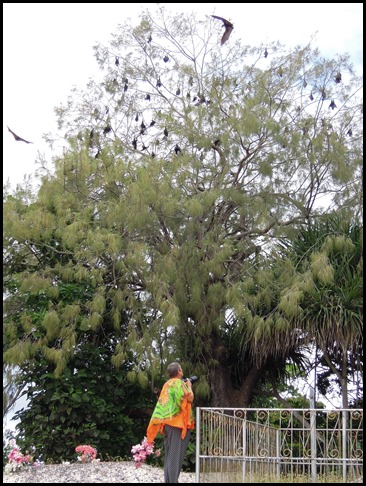 The book says, “Clinging in their
hundreds to casuarinas trees in the village of Ha’avakatolo are the native peka
or flying foxes. It seemed most appropriate to find a tree
in a graveyard to see these chattering creatures up close and personal.
The lads painting the church opposite laughed and cheered as they watched me
scale a wall and tiptoe back and forth as I marveled at these little batmen.
Much smaller than the ones we had seen in Neiafu, but they will most certainly
do for now.
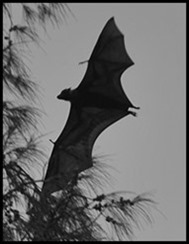 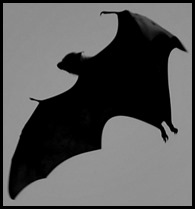  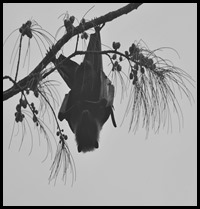 Megabats constitute the suborder Megachiroptera,
family Pteropodidae of the order Chiroptera (bats). They are also called fruit
bats, old world fruit bats, or flying foxes. Fox Island, Australia, is believed
to be home to the largest colony of flying foxes on the continent. Our new
little friends were happy to pose.
 Description:
The megabat, contrary to its name, is not always large: the smallest species is
two and a half inches long and thus smaller than some microbats. The largest
attain a wingspan of five and a half feet, weighing in at up to three and a half
pounds. Most fruit bats have large eyes, allowing them to orient themselves
visually in twilight, also inside caves and forests.
Their sense of smell is excellent. In
contrast to the microbats, the fruit bats do not use echolocation (with one
exception, the Egyptian fruit bat Rousettus egyptiacus, which uses high-pitched
clicks to navigate in caves).
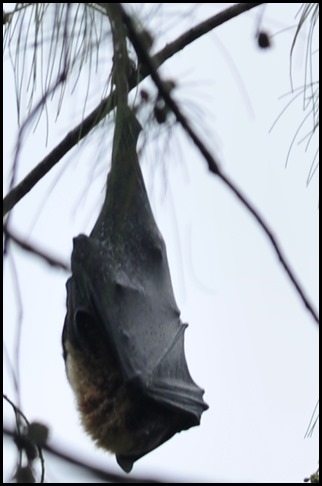 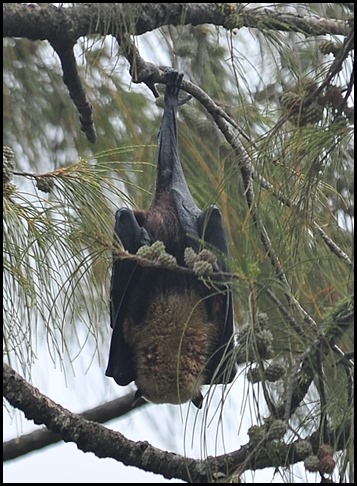 Behaviour and
ecology: Megabats are frugivorous or nectarivorous, i.e., they eat
fruits or lick nectar from flowers. Often the fruits are crushed and only the
juices are consumed. The teeth are adapted to bite through hard fruit skins.
Large fruit bats must land to eat fruit, while the smaller species are able to
hover with flapping wings in front of a flower or fruit.
Frugivorous bats aid the distribution
of plants (and therefore, forests) by carrying the fruits with them and spitting
the seeds or eliminating them elsewhere. Nectarivores actually pollinate visited
plants. They bear long tongues that are inserted deep into the flower; pollen
passed to the bat is then transported to the next blossom visited, thereby
pollinating it. This relationship between plants and bats is a form of mutualism
known as chiropterophily. Examples of plants that benefit from this arrangement
include the baobabs of the genus Adansonia and the sausage tree
(Kigelia).
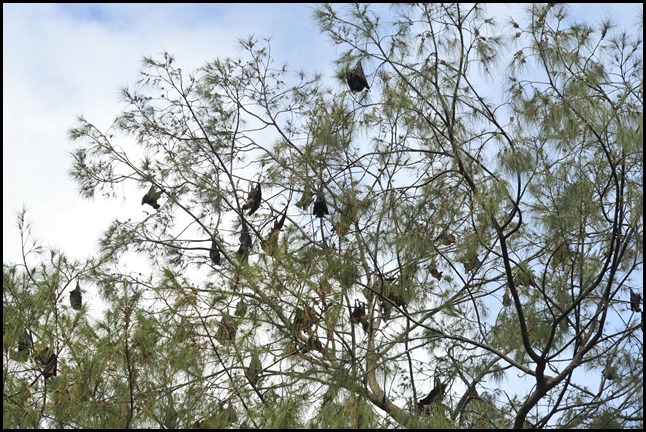 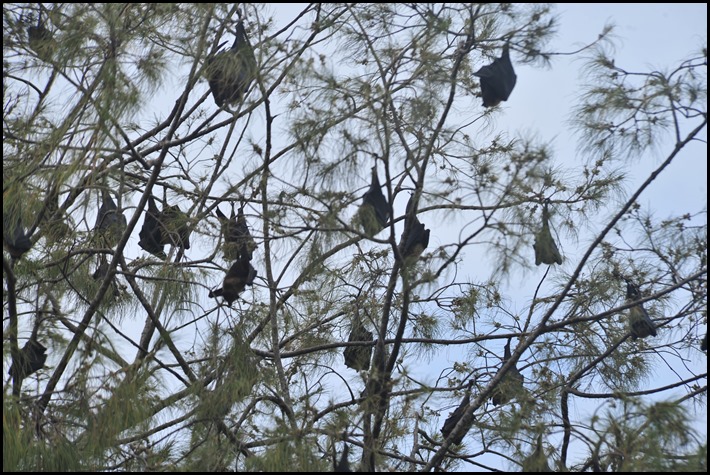 As disease
reservoirs: Fruit bats have been found to act as reservoirs for a
number of diseases which can prove fatal to humans and domestic animals, but the
bats themselves sometimes have no signs of infection.
Researchers tested fruit bats for the
presence of the Ebola virus between 2001 and 2003. Three species of bats tested
positive for Ebola, but had no symptoms of the virus. This indicates the bats
may be acting as a reservoir for the virus. Of the infected animals identified
during these field collections, immunoglobulin G (IgG) specific for Ebola virus
was detected in Hypsignathus monstrosus, Epomops franqueti, and Myonycteris
torquata.
The epidemical Marburg virus was
found in 2007 in specimens of the Egyptian fruit bat, confirming the suspicion
this species may be a reservoir for this dangerous virus.
Other viral diseases which can be
carried by fruit bats include Australian bat lyssavirus and Henipavirus (notably
Hendra virus and Nipah virus), both of which can prove fatal to humans. These
bats have been shown to infect other species (specifically horses) with Hendra
virus in Australian regions. Later, humans became infected with Hendra virus
after being exposed to horse body fluids and excretions.
Fruit bats are considered a delicacy
by South Pacific Islanders as well as in Micronesia. Consumption has been
suggested as a cause of Lytico-Bodig disease on the Micronesian island of Guam,
through bioaccumulation of a plant toxin that the bats are immune
to.
 Classification: Bats are usually thought to belong to
one of two monophyletic groups, a view that is reflected in their classification
into two suborders (Megachiroptera and Microchiroptera). According to this
hypothesis, all living megabats and microbats are descendants of a common
ancestor species that was already capable of flight.
However, there have been other views,
and a vigorous debate persists to this date. In the 1980’s and 1990’s, some
researchers proposed (based primarily on the similarity of the visual pathways)
that the Megachiroptera were in fact more closely affiliated with the primates
than the Microchiroptera, with the two groups of bats having therefore evolved
flight via convergence. However, a recent flurry of genetic studies confirms the
more longstanding notion that all bats are indeed members of the same clade, the
Chiroptera. Other studies have recently suggested that certain families of
microbats (possibly the horseshoe bats, mouse-tailed bats and the false
vampires) are evolutionarily closer to the fruit bats than to other microbats.
To us a bat is a bat...........
ALL IN ALL QUITE
STRANGE CHAPS
UPSIDE-DOWN HANGING
MICE |
